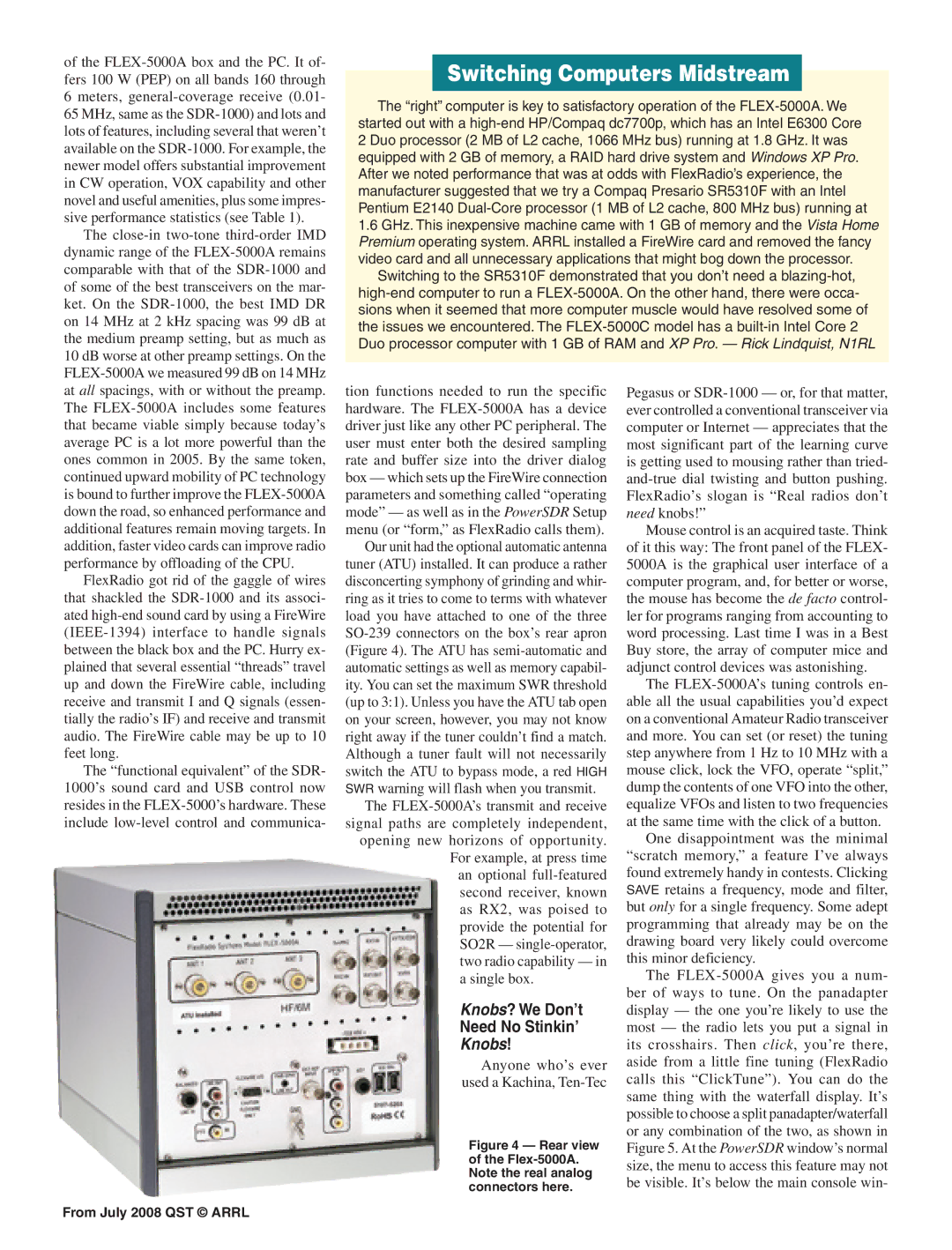
of the
6 meters, |
65 MHz, same as the |
lots of features, including several that weren’t |
available on the |
newer model offers substantial improvement |
in CW operation, VOX capability and other |
novel and useful amenities, plus some impres- |
sive performance statistics (see Table 1). |
The |
dynamic range of the |
comparable with that of the |
of some of the best transceivers on the mar- |
ket. On the |
on 14 MHz at 2 kHz spacing was 99 dB at |
the medium preamp setting, but as much as |
10 dB worse at other preamp settings. On the |
Switching Computers Midstream
The “right” computer is key to satisfactory operation of the
1.6GHz. This inexpensive machine came with 1 GB of memory and the Vista Home Premium operating system. ARRL installed a FireWire card and removed the fancy video card and all unnecessary applications that might bog down the processor.
Switching to the SR5310F demonstrated that you don’t need a
at all spacings, with or without the preamp. |
The |
that became viable simply because today’s |
average PC is a lot more powerful than the |
ones common in 2005. By the same token, |
continued upward mobility of PC technology |
is bound to further improve the |
down the road, so enhanced performance and |
additional features remain moving targets. In |
addition, faster video cards can improve radio |
performance by offloading of the CPU. |
FlexRadio got rid of the gaggle of wires |
that shackled the |
ated |
between the black box and the PC. Hurry ex- |
plained that several essential “threads” travel |
up and down the FireWire cable, including |
receive and transmit I and Q signals (essen- |
tially the radio’s IF) and receive and transmit |
audio. The FireWire cable may be up to 10 |
feet long. |
The “functional equivalent” of the SDR- |
1000’s sound card and USB control now |
resides in the |
include |
tion functions needed to run the specific hardware. The
Our unit had the optional automatic antenna tuner (ATU) installed. It can produce a rather disconcerting symphony of grinding and whir- ring as it tries to come to terms with whatever load you have attached to one of the three
The
a single box.
Knobs? We Don’t
Need No Stinkin’
Knobs!
Anyone who’s ever used a Kachina,
Figure 4 — Rear view of the Flex-5000A. Note the real analog connectors here.
Pegasus or
Mouse control is an acquired taste. Think of it this way: The front panel of the FLEX- 5000A is the graphical user interface of a computer program, and, for better or worse, the mouse has become the de facto control- ler for programs ranging from accounting to word processing. Last time I was in a Best Buy store, the array of computer mice and adjunct control devices was astonishing.
The
One disappointment was the minimal “scratch memory,” a feature I’ve always found extremely handy in contests. Clicking SAVE retains a frequency, mode and filter, but only for a single frequency. Some adept programming that already may be on the drawing board very likely could overcome this minor deficiency.
The
From July 2008 QST © ARRL
